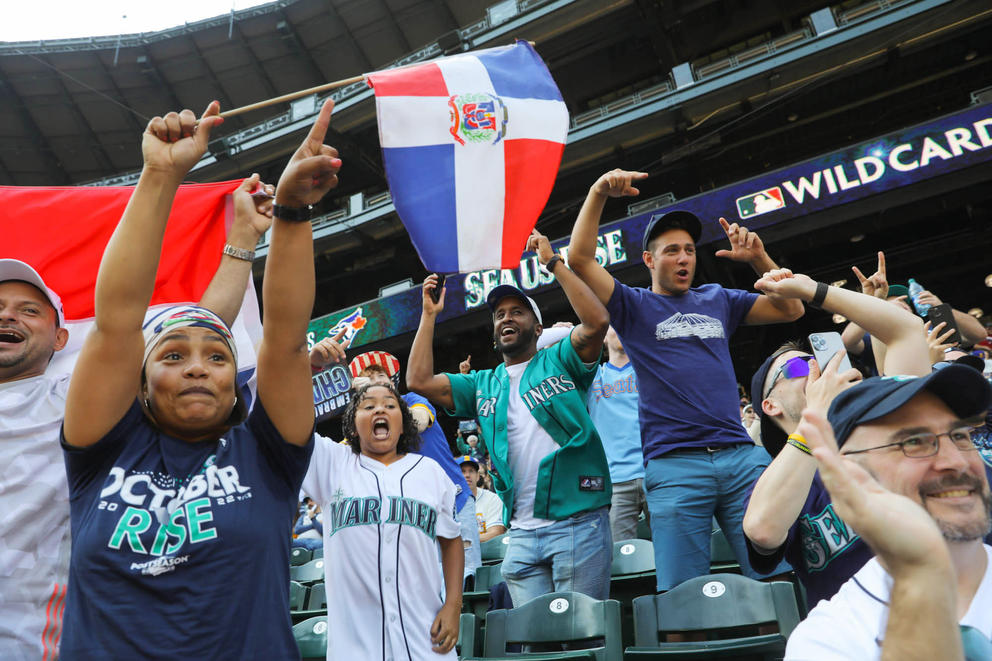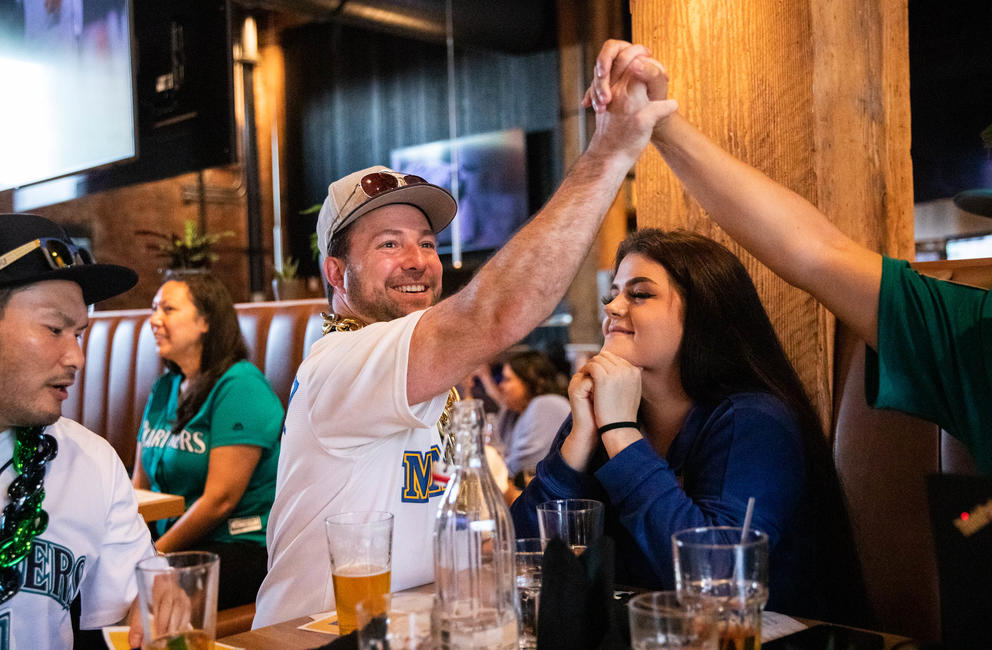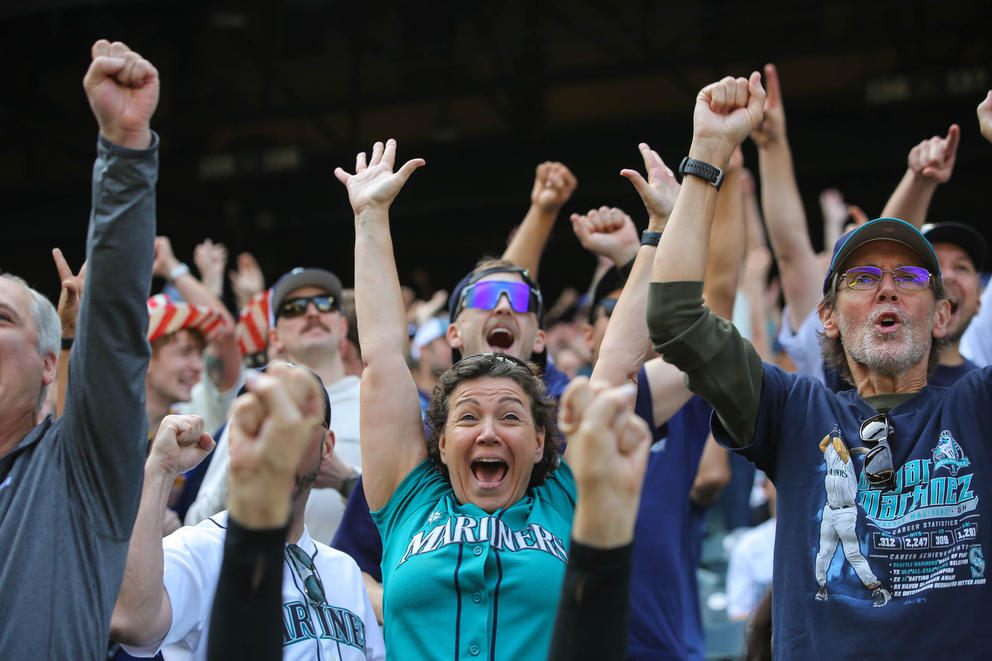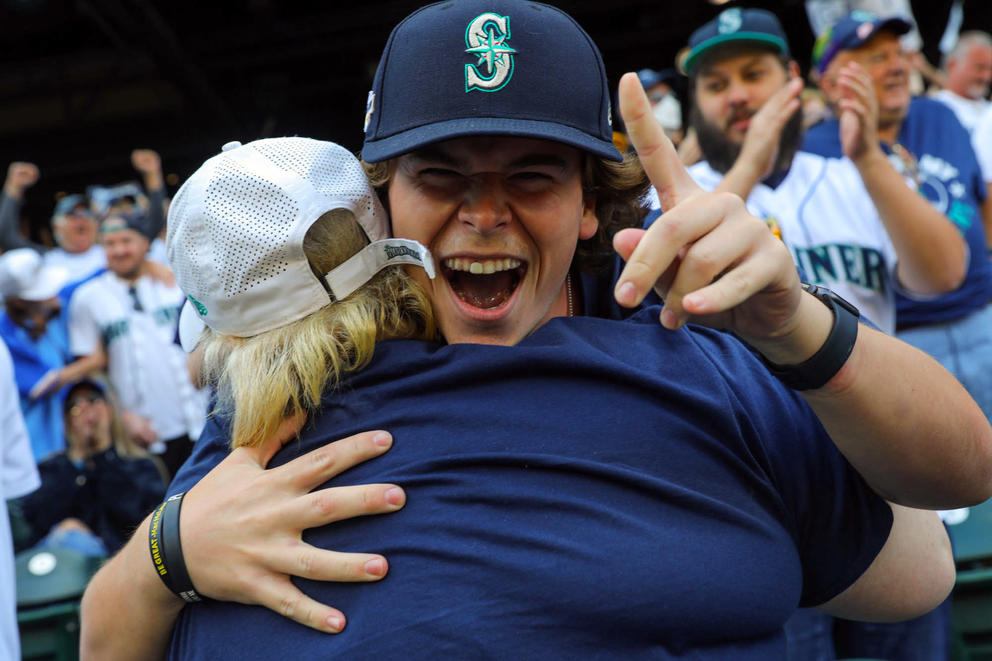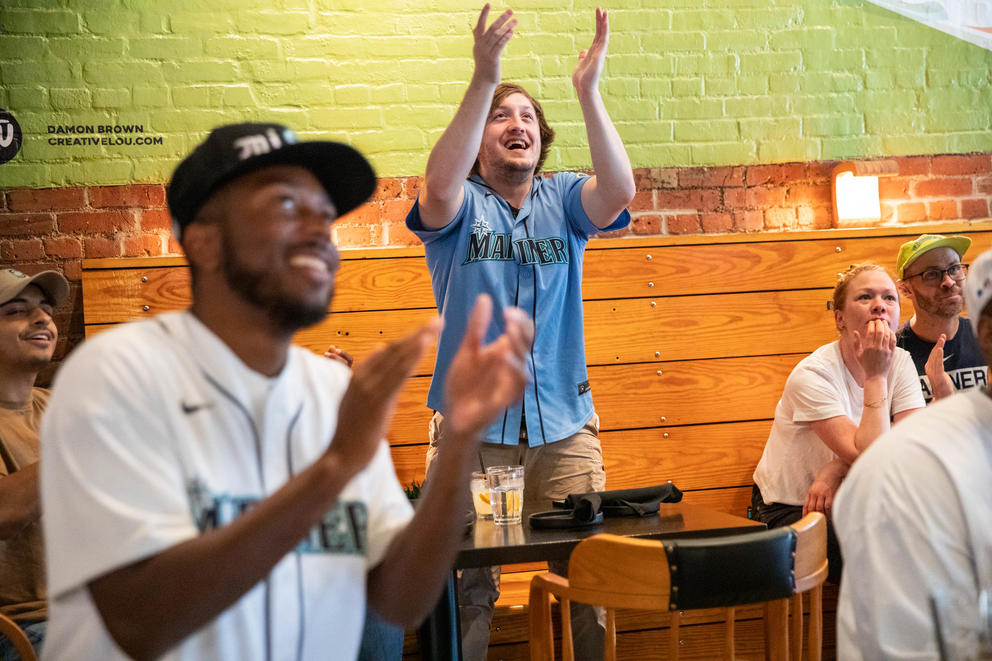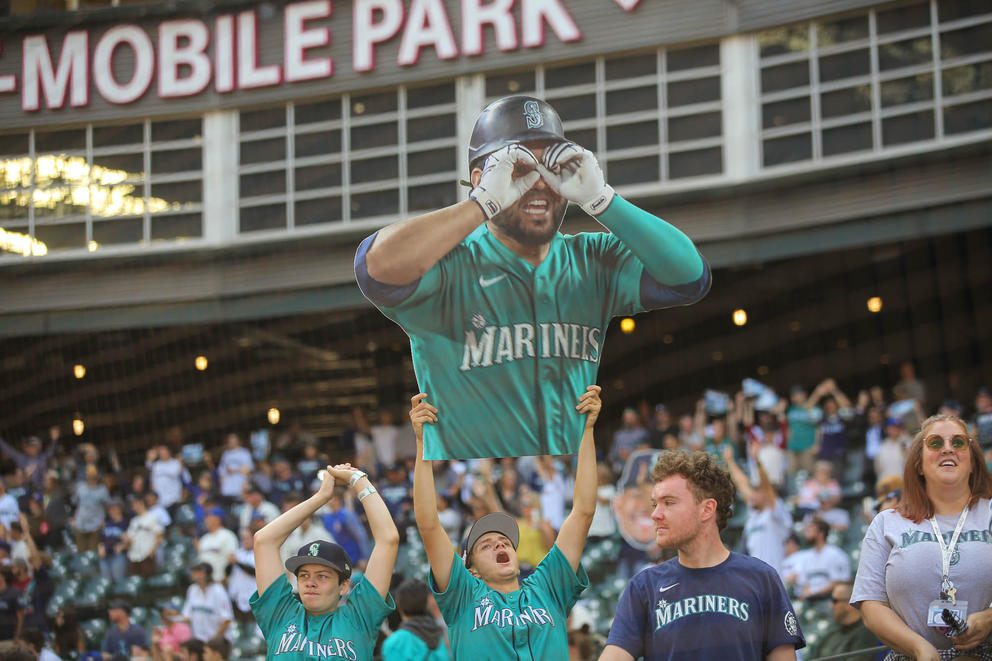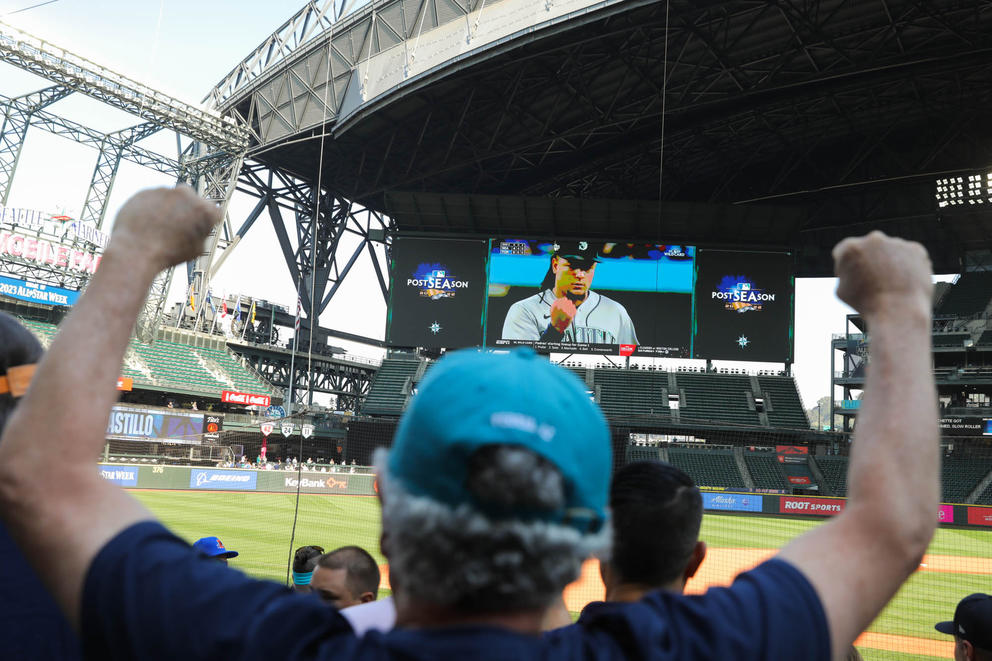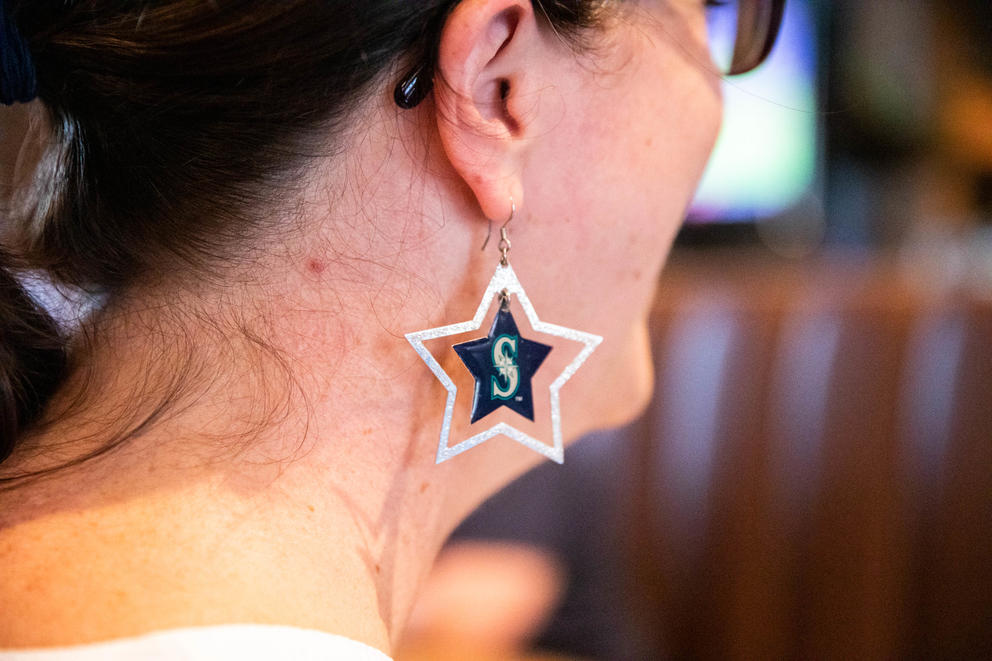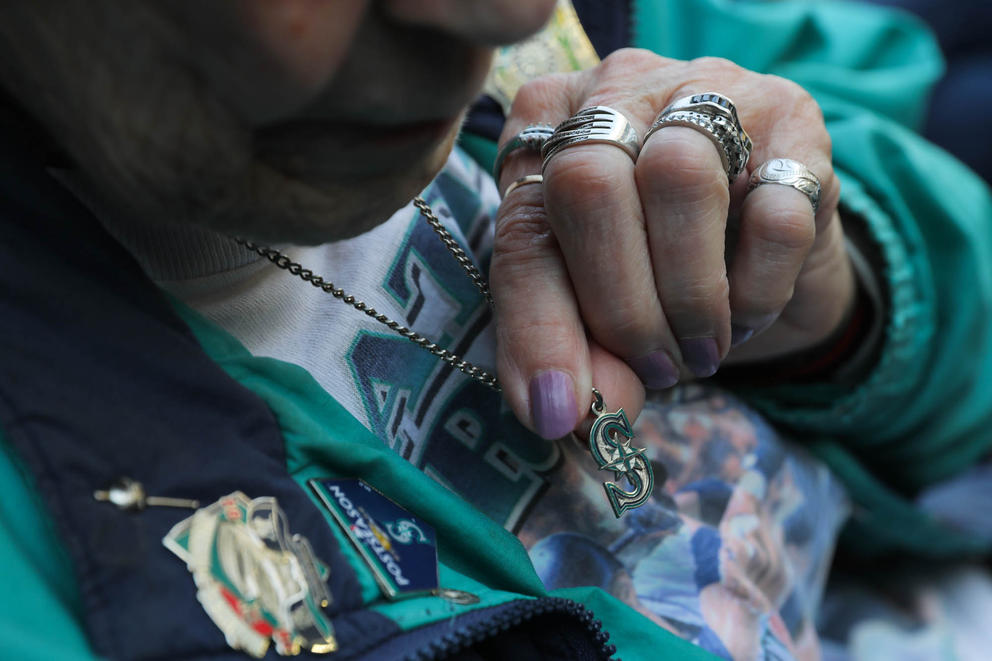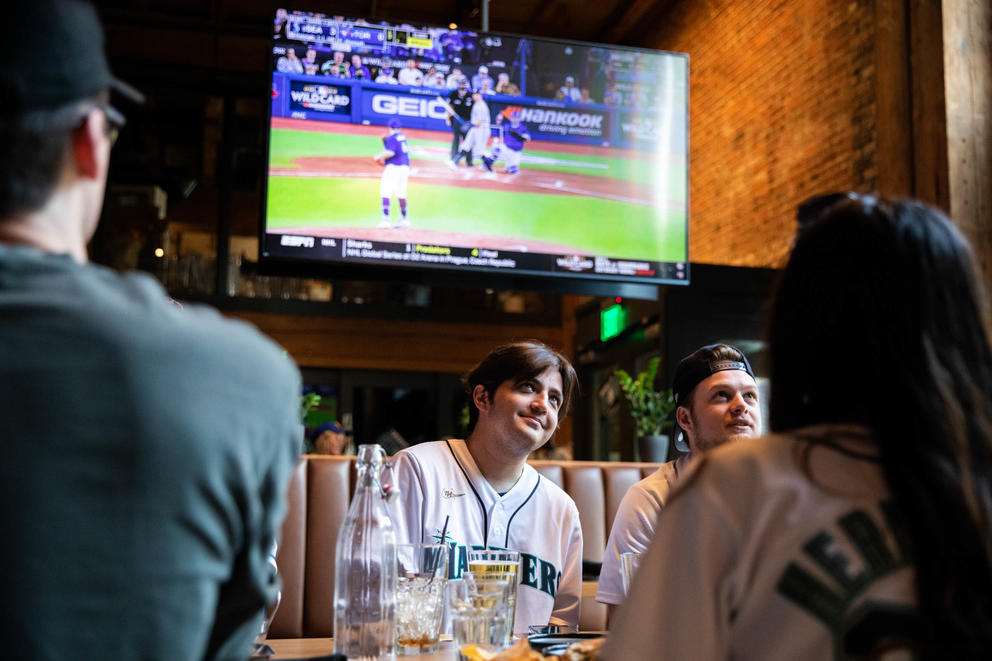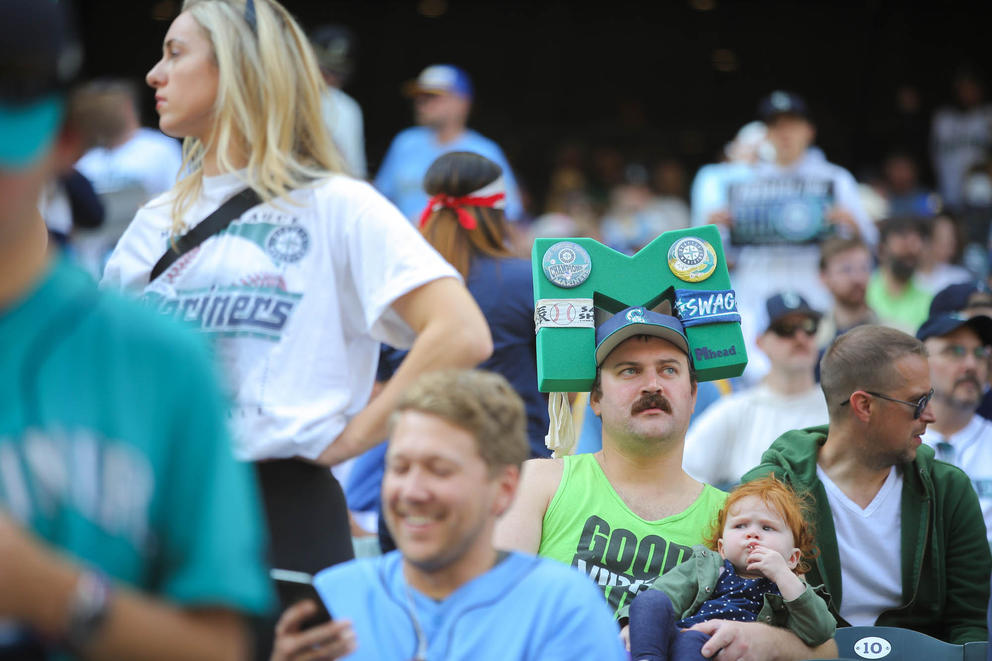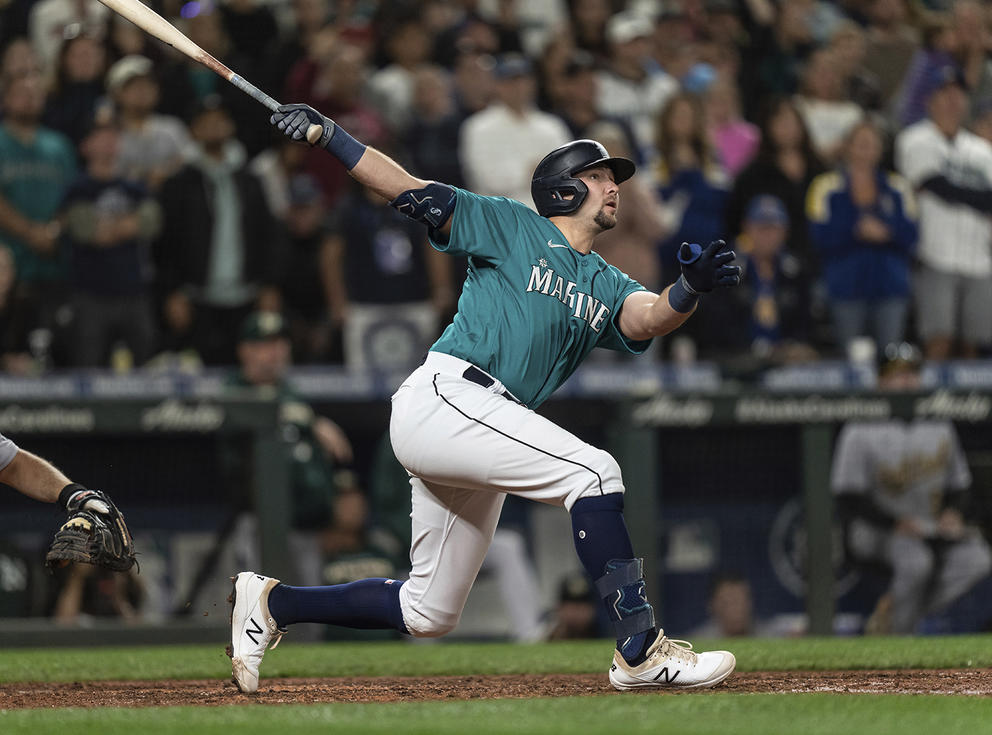It’s kind of early to be at a bar, isn’t it? Is there anywhere else we can go?
Actually, if you want to watch with other people, a bar is probably your best bet. And if you want to find a bar that you know is open and optimized for game viewing, the Mariners have a list of them here. While the Mariners did open the stadium for viewing parties during the first round of the playoffs, they are now busy setting up the stadium for the team's first home playoff game in a long time.
Oh, and if you don't feel like going to a bar, you can stay home and watch the game on TBS, listen on the radio at 710 am or stream it from seattlesports.com.
Are you crying?
Yes, and I'm not the only one. As you have most likely heard, the Mariners, until last week, were the keepers of the longest playoff drought in American men’s professional athletics. It's been a very long 21 years. The last time the team played in the postseason was shortly after the September 11 terrorist attacks. Yes, that is a somber note to add to a feel-good explainer and one not often brought up in all the recent hoopla, but it is the clearest historical marker, and the U.S. response to those attacks colored those playoffs deeply.
The M’s lost to the New York Yankees in the American League Championship Series that year, coming one series short of the World Series for the third time in team history. The youngest player on this year’s squad – Julio Rodríguez – was 10 months old when all that happened.
It hasn’t been all bad for Seattle sports fans. Since that 2001 playoff appearance, many local teams have played many postseason games. Most notable, the WNBA’s Seattle Storm have made 18 playoff appearances and won four championships. The Seahawks have, of course, played a good deal of playoff football, entering the postseason 14 times in that period and winning one Super Bowl. Reign FC just notched their sixth trip to the NWLS playoffs since 2014. Even the NBA’s Supersonics had a couple of 21st-century playoff appearances before moving to Oklahoma City after the 2008 season. The Sounders, meanwhile, have won two MLS Cups and had made the playoffs every one of their 13 years in the league, until this year. Sorry, Sounders fans.
So why haven’t you given up?
Well, that’s complicated. But one big reason is because the team has recently come so close to ending the drought. In both 2014 and last year, the Mariners entered the last game of the season still vying for a wild card. To advance, the Mariners needed to win that final game and needed another team to lose. And in both games the other team won their game before the Mariners finished their game. And, honestly, both times the fanbase seemed OK with that. In fact, the 2014 game ended with relief pitcher Tom Wilhelmsen and fans dancing raucously to “Turn Down for What” in a kind of collective cathartic rave-up. After last year’s near-miss, outfielder Mitch Haniger wrote in The Player’s Tribune that “This group is going to the playoffs. That’s not an if… it’s a when. And that when is soon.” He was right.
What is a Wild Card?
Whoa. I clearly need to back up a little bit. The “wild card” made its first appearance in Major League Baseball in 1995. Back then there was only one wild-card team in each of MLB’s two leagues – the American League and the National League. I’m not going to explain how it worked back then because the wild card has changed a lot in the decades since. This year the wild card is very different. For one thing, this is the first time that there are three wild-card teams in each league.
Now, hang with me here while I try to explain how this works. Each league has three divisions – conveniently grouped by geography into the East, the Central and the West. The top team in each of those divisions advances to the playoffs along with the three teams with the best records who didn’t win one of the divisions. These are the wild-card teams. That makes six playoff teams in each league.
In the first round, four of those teams play, tournament-style, in a best-of-three series for the chance to face off against the two divisional winners with the best record (both of whom get a first-round bye). The wild-card team with the worst record plays the worst of the three division winners. And the best of the wild-card teams plays the second-best wild-card team. This year the second-best wild-card team in the American League is the Mariners. That is why they faced off against the best wild-card team, the Blue Jays, in a three-game series in Toronto. Got that? Might just be easier to look at the bracket.
And the Mariners beat the Blue Jays, right? What happens now?
Yes, they won in historic fashion, actually. Now the Mariners are playing in one of two American League divisional series, a best-of-five contest that will feature at least one game in Seattle (this Saturday) and will be played against the dreaded Houston Astros, a division rival who ended the season with the best record in the American League and who are a perennial thorn in the side of the Mariners. This year they beat the Seattle ballclub 12 times in 19 matchups.
If the Mariners win this series – and I hope you are knocking on wood here – they would advance to the American League Championship series against the winner of the other divisional series – which pits the Cleveland Guardians against the New York Yankees – in a best-of-seven contest. If they pull that off, they would go on to the World Series, where they would try again to notch four victories against the winner of the National League Championship Series.
If they manage that, they get a trophy.
So they have a home game? When is it? Can I go?
The game will be on Saturday, but start times aren't set yet. Tickets are currently starting at roughly $300. And there will be another game on Sunday if neither team wins the first three games.
Does this team actually have a chance?
Look. One of the things that is so exciting about getting into the playoffs is that, really, every team has a chance. In the 27 years that Major League Baseball has had the wild card, seven wild-card teams have won it all. Think about it in this very baseball way: If you managed to get seven hits in 27 at-bats, you would have a .259 batting average, which is a decent batting average – especially for the Mariners.
Okay. I’m in. What jersey should I buy?
This is a very fraught question for baseball fans. Teams trade players. Players opt for free agency, which means that they sign with another team. And some young players burn brightly and then burn out. Walking among the jersey-clad masses at any major league park can turn into a tour of “what could have been.” This is especially true for the Mariners, who spent two decades hanging their hopes on names like Ackley, Sexson and Cano. So how do you keep your game-day wardrobe up-to-date as your fandom continues for years and years?
You might want to snag a Cal Raleigh jersey (#29), since the catcher did hit the clutch home run that secured the Mariners their place in the postseason. Or maybe Luis Castillo (#21), the very talented pitcher who joined the team after a mid-season trade with the Cincinnati Reds and who dominated in the first game against the Blue Jays. Then there's Eugenio Suárez (#28), the third baseman whose "good vibes only" mantra has become a guiding principle in the Mariners' clubhouse. Any one of those jerseys would earn you some respect from any Mariners fan.
But the best bet is Julio Rodríguez's #44 jersey. Not only is Julio a major factor in the team’s success this year, but he just signed a major contract with the ballclub. It was a big deal – topping out at $470 million over 17 years – and makes it very likely that he will be hitting dingers and stealing bases at T-Mobile Park for many years to come.
And how do I follow what is going on with the team?
Oh. There are a few must-follows: First are the Mariners’ official accounts; in particular I would suggest the team’s Instagram, where videos of announcers calling the big plays serve as a replayable dose of pure joy. For the latest team developments, you’ll want to follow Shannon Drayer. She hosts the pre- and post-game shows for Seattle Sports, aka 710 am, and she usually has the scoop. And if you are more interested in a mix of analysis and the raw emotion of Mariners fandom, I’d suggest following the good fans at Lookout Landing. Also, of course, you should follow the reporters at The Seattle Times, who did predict that the team would be this good - Ryan Divish is on the beat. Finally, I would suggest that you follow Joe Veyera, a local journalist who for years has tracked the team and fan journey by photoshopping a banner in the stadium’s rafters with the latest highlight or lowlight. Here’s hoping they are all highlights from here on.

